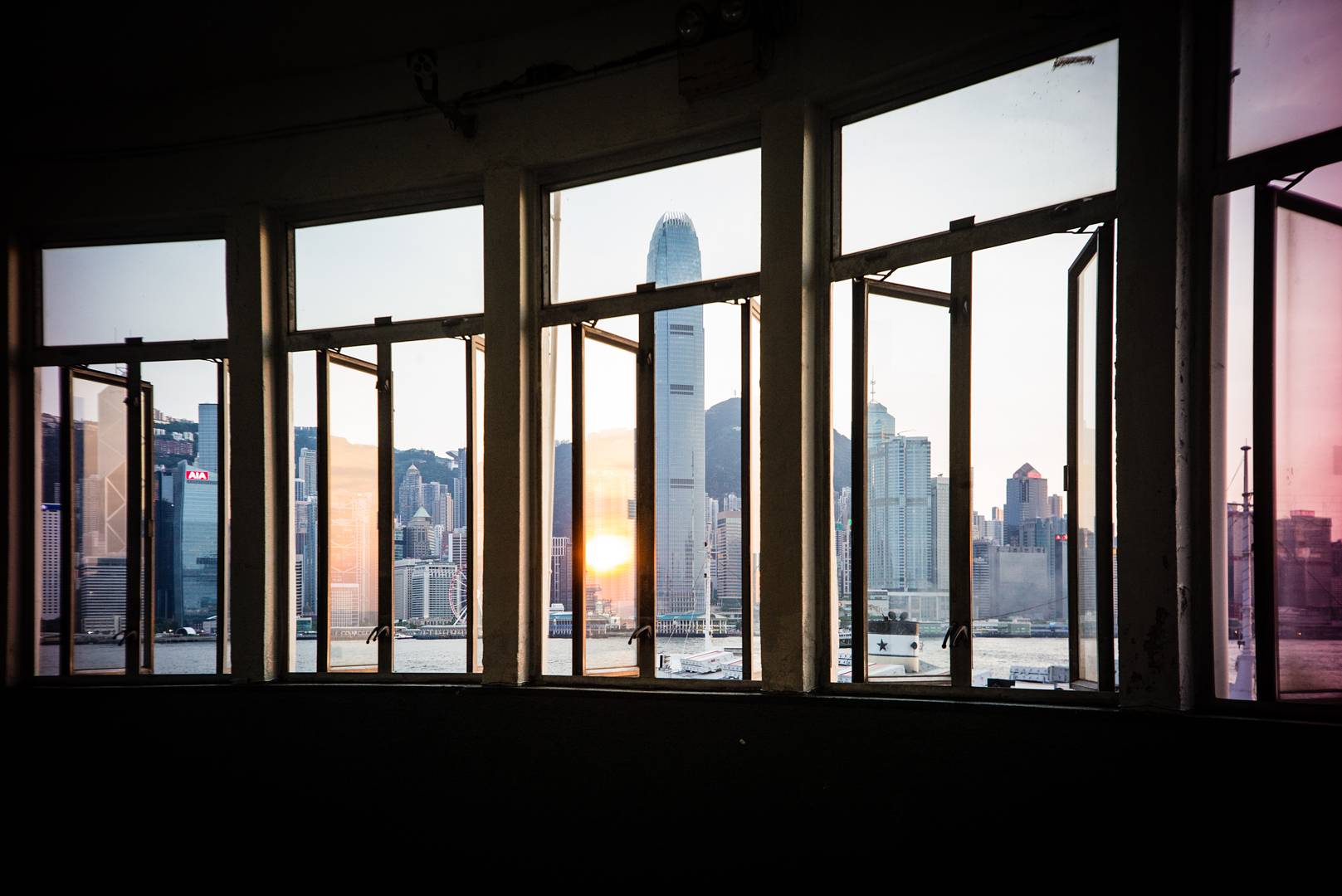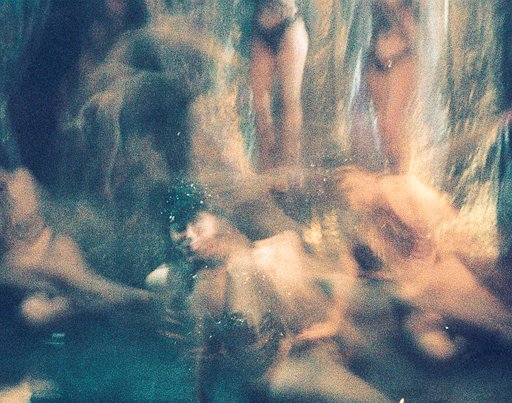Stunning Street Snaps with Architect Wong Wei-Him and the Lomo LC-A Minitar-1 Art Lens
1 13 Share TweetWong Wei-Him is a street photographer and architect based in Hong Kong. We caught up with him to talk about his experience with the Lomo LC-A Minitar-1 32/2.8, which he used to take the most beautiful pictures along Hong Kong harborside.
“Slow down, just for a moment” is an attempt to put my works from different projects together to create a new narrative. It is about a place I call home.
Hi Wong Wei-Him! Welcome to the Lomography Magazine. Could you tell us a bit about yourself?
I was born in Vancouver, but I was brought up in Hong Kong. I studied in a local Catholic school and I have always loved to draw. My father was a civil engineer who decided to run a small interior design firm in his mid-40s. I worked for him for a summer, and he encouraged me to be an architect.
I studied Architecture in Montreal and came back to Hong Kong to work. At some point, my work took me to Shanghai where I stayed for three years. I was about to settle down, but then my father got very ill and I had to come home. I met my wife in 2008. She is an architect from Melbourne. Two years later after we met, we started our own design office, working on interior projects and anything interesting to us.
Could you tell us more about your photography?
I take photos of anything that could inspire me for my design projects. I always carry my compact digital camera wherever I go, looking for beautiful architecture, spaces, and design details. Photography is a visual diary I keep, and it helps me to remember. It wasn’t until I came across the magnificent works of Magnum photographer Elliott Erwitt and iN-PUBLiC photographer Shin Noguchi — so peculiar the way they look at culture and humanity — that I decided to make street photography a second passion of my life.
Architecture is a practical art that shapes how people live and work in a city, but this is just the beginning. In time, the city and the citizens evolve in what architects and urban designers have created. I am interested in these phenomena. Street photography allows me to record these changes over time. It is an art form based in the observation of our society.
What draws you to Hong Kong harborside?
For as long as I can remember, I have treasured Hong Kong as my hometown, but my relationship with the harbour waterfront is a relatively recent development. Being a father of two sends me in search of new open spaces in the city I thought I knew so well. Out of all the places I have found, I keep coming back to the harbour waterfront. She is one of the most precious pieces of natural heritage that defines my hometown, like the harbour of Sydney, or the Bund in Shanghai. She gives a perfect unobstructed view, stretching from east to west, in this hyper-dense city.
The relationship between the waterfront and the citizens of Hong Kong is emotional. Every day, people come to the waterfront to stretch, to run in solitude, with a companion or pets. They share good times and bad times. They laugh, and they cry; do something or — most of the time — nothing, along with this linear strip of the city. I find all these little moments of life fascinating against such a spectacular backdrop.
What are your thoughts on analogue photography?
Shooting with a film camera requires a certain kind of precision, limited by the reflex time required to operate. As an architect, my training allows me to work well, not with a buffet of choices, but rather with constraints including those of my own. Limitation helps me to focus on the moment itself.
I work with a Leica M6 mostly, and the films I use are Kodak Portra 400 and Lomography 400 colour negative film. This combination allows me to minimize the amount of time I spend on post-production. The specific color tone of my film choices goes very well with the palette of the Hong Kong cityscape.
Do you see photography as a reflection of reality, or more of a constructed narrative?
I think it can be both. A picture is worth a thousand words, but our words are defined by the language we speak. Two minds could have totally different interpretations of one picture.
Street photography is a common language, not only among photographers but also the world readers. We use words, no matter which language one speaks, to create stories and poetry. I am interested in how I could do the same with my photography.
How do you find inspiration for your work?
Inspiration is everywhere, and seeking inspiration is an adventure.
I admire photography by Araki, Annie Leibovitz, Butsou Lai, Elliott Erwitt, and Shin Noguchi; their works shows me possibilities for what I could achieve with my camera. To understand a photograph, I turned to literature. I adore Camera Lucida by French Philosopher Roland Barthes. He discusses the semiotics of photography, slicing a picture into layers of symbols and meanings. I am also a Murakami reader, and through his work, I was introduced to Duke Ellington, The Beach Boys, and Sonata D850 by Franz Schubert. I always compare street photography to jazz, as both of them require the ability to improvise. The ability of an artist to make a reference (with history or humanity) holds just as much weight as the originality of the work itself. I usually turn to nature when I need inspiration for my design works.
Did you think of a theme before you shoot? What is your creative process?
I think a theme comes later when certain amount of works are accumulated. One shouldn’t think too much about the project when you are out in the field.
“Slow down, just for a moment” is an attempt to put my works from different projects together to create a new narrative. It is about a place I call home.
Could you caption your favorite piece of work, and share with us the concept behind it?
I see the beautiful things in my hometown through my lens and I want to show them to others. One of the experiences I love most is inside Ferrytale.
“To appreciate the iconic harbor of Hong Kong, one of the best ways is to take a ferry from one promenade to another. Very different from everything else, the ferry has its own pace and never attempts to catch-up. Within this punctuated time frame of a ride is a perfect opportunity to slow down, meet a passenger, outlook the city landscape with the mixture of old and new architecture. Being 120-year-old, the experience itself is a piece of Hong Kong’s history.”
How do you like the Lomo LC-A Minitar-1 32/2.8 Art Lens ?
It is a very compact lens that could ease the weight of the Leica Camera without losing its balance, and the outcome reminds me of my first Lomo LC-A experience while I was in Montreal. I was thrilled to learn this Art Lens is a collaboration between the Lomography research team in Hong Kong, and the Lomography Headquarters in Vienna, Austria.
Are you working on any upcoming photography projects?
On the Waterfront is an on-going project, and it demands me to further explore its possibility from different aspects. Like all the beautiful things in life, I believe the longer it takes, the better the project can become. I am interested in how I could bring my project to an in-depth level.
Thanks Wong Wei-Him for your sharing your beautiful snaps! To see more of Wong Wei-Him's work, check out his website and follow him on Instagram.
written by joycelau21 on 2018-10-23 in #culture #people #places








































一個留言